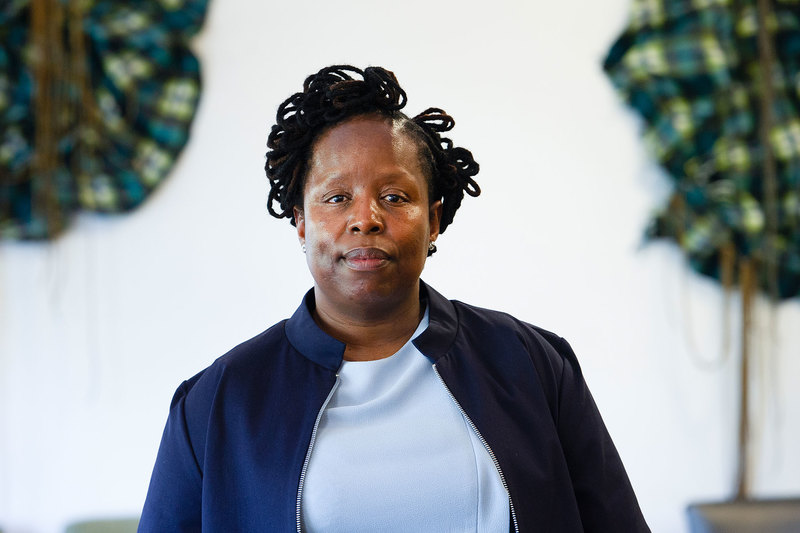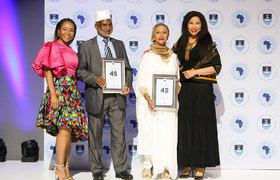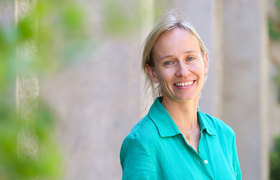Zonke Mbaru recognised for her work in risk management
14 December 2022 | Story Kamva Somdyala. Photo Lerato Maduna. Read time 5 min.
The University of Cape Town’s (UCT) Zonke Mbaru has been recognised for her outstanding contribution to risk management by the Institute of Risk Management South Africa’s (IRMSA) – this for contributing to reimagining how UCT conducts its risk assessments.
Together with her boss, Shai Makgoba, the director of risk compliance and relationships department, they devised a plan to equip most university faculties with risk guidelines and key to what Mbaru was recognised for was her contribution to the UCT business continuity plan and UCT fire claims.
“Since I joined UCT four years ago, hitting the ground running, I’ve been working towards the implementation of risk management across the university. As it stands, almost every faculty and key departments have their own risk registers. The risk maturity has improved a lot as most faculties and departments understand the process and own it by taking the initiative to call us and say we’ve reviewed our register; can you also have a look at it,” Mbaru said following the awards ceremony in early December, where she was runner-up in the Specialist of the Year category.
The nomination highlighted the key attributes of the work as follows:
- working collaboratively with business ie, faculties and departments and being able to engage with a variety of stakeholders from the executive and junior staff members on risk-related matters
- assisting the university in developing a robust risk culture and influencing them with evidence-based decision-making
- contribute immensely towards the development of business continuity management
- handling of the UCT fire claim, which is one of the most complex and demanding insurance claims.
Critical reporting
“You could say as the risk department, we are the second line of defence because we also look at what the controls are,” Mbaru explained.
“The biggest pressures are the unplanned assignments like the UCT fire claim, the review of due diligence documents, fraud and corruption, including whistle blowing activities, review of governance documents as well as quarterly reports that are prepared for various committees that end up with Council. The reporting is quite critical in our engagement and the job, you can imagine, is demanding – especially with very limited capacity in the office.”
“As it stands, almost every faculty and key departments have their own risk registers.”
Makgoba was glowing in his praise of Mbaru: “Zonke, with her experience, has made a significant contribution to the risk management process at the university. This is in addition to contributing to the insurance offering by the university and assisting in the countless due diligence reports for various funders (especially those relating to research projects and grant proposals).”
Minimise adverse impact
Makgoba added: “The importance of this individual category recognition within the industry cannot be over emphasised and speaks to the efforts that have been made by the university leadership to identify and assess potential risks that can derail the university from achieving its objectives. But what is key is having risks mitigation measures to deal with these risks.
“The recent challenges at Council and executive leadership requires risk management and, in particular, risk mitigation to be central in addressing these challenges in a manner that minimises any adverse impact on UCT.”
In closing, Mbaru said: “What would please me at UCT is to see the risk culture embedded and the risk maturity level being improved. We have done quite well, but there’s more we can do. The support of all staff, researchers and academics is necessary in order to take the university to the next level.”
 This work is licensed under a Creative Commons Attribution-NoDerivatives 4.0 International License.
This work is licensed under a Creative Commons Attribution-NoDerivatives 4.0 International License.
Please view the republishing articles page for more information.










